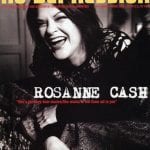Tim Easton – Keep on movin’
Watching Tim Easton perform solo acoustic at Los Angeles’ Getty Museum in January was like watching a top baseball pitching prospect finally hurl the game everyone knew he could. Easton has long offered considerable talent, but past appearances in Los Angeles, his home for two years until a recent move to Athens, Georgia, have been hit-and-miss affairs.
A solo show at the Hollywood dive Goldfinger’s, back when the Ohio native first set his sights on Los Angeles, was mostly a forgettable affair, suggesting that Easton was a decent, if mostly dime-a-dozen folk-rock singer-songwriter. Other ensuing appearances featuring Easton and a rhythm section displayed flashes of greatness, occasional distraction (mostly the onstage gymnastics of upright bassist Chris Burney), and an overall sense that the artist had yet to find any sort of stride.
A full-band appearance at SXSW in 2001 to promote his sophomore album The Truth About Us was an exhilarating jolt of folk and pop rock. But still, one had to wonder, how much of the gig’s success was due to the multiple talents and magnetic presence of that night’s key backing player, former Wilco mainstay Jay Bennett?
But here, in a pin-drop-quiet room before a hyperattentive audience on a bill with the always-memorable Buddy & Julie Miller at a stately event linked to the pristine museum’s exhibit of Depression-era photographer Dorothea Lange, Easton dazzled. Alone. A charming, utterly relaxed performer with a total command of his six-string and more good songs than some artists have in a career.
Easton’s new album, Break Your Mother’s Heart, demonstrates that this thirtysomething songwriter’s maturation is not limited to the stage. The disc, his second for New West Records and third solo effort overall, is largely a slow- to mid-tempo, acoustic-driven collection akin to Dylan’s ’70s-era folk rock and to the like-minded craftsmen who followed — especially John Prine, whose voice Easton’s often echoes. Gone are the bar-band tendencies that marked part of 1998’s Special 20, his solo debut after the demise of his old group the Haynes Boys. Gone, too, are the incongruous alt-pop window dressings that shaded some of The Truth About Us.
Break Your Mother’s Heart, by contrast, is a graceful, wizened effort. In the grand scheme of things, it’s hardly a landmark, but it doesn’t lack ambition. It succeeds because Easton took on a form that has long been dulled by a thousand wannabes and created and album that is evocative and, perhaps, enduring.
“Relaxed, that’s how I’d describe it,” the moppy-haired Easton says, backstage at the Getty. “It’s more relaxed and it’s more real.”
It very easily could been something far from relaxed. Easton knew what he didn’t want on Break Your Mother’s Heart — to continue in the same vein as The Truth About Us, despite producer Joe Chicarelli’s interest in working with him again. It was time to do something “different,” and “different” prompted several challenges, including being involved in the production for the first time (Easton is credited as co-producer), doing live vocals as the band also recorded, and handling nearly all the guitar parts himself. Yes, it could have been rough.
Enter John Hanlon, best-known for his studio engineering mastery with Neil Young & Crazy Horse. The duo hooked up by way of New West’s Peter Jesperson, who had first worked with Hanlon on an album by Canadian rock band 13 Engines recorded at Young’s famed Broken Arrow Ranch in Northern California a dozen years ago. From their earliest meetings at Hanlon’s house in L.A.’s Topanga Canyon, the veteran producer/engineer laid out his take-it-or-leave-it philosophy to Easton. He was into recording live in a setting he calls “group art.”
“I believe strongly in capturing performances, and it should be performance-based, not perfection-based,” Hanlon says. “Honesty comes from capturing inspiring live performances, putting the right musicians in the room together and creating an atmosphere that’s conducive to letting the muse come through. Neil [Young] has imbued in me the sense that the human condition’s imperfect, so why sit there and make things perfect?”
“I let [Easton] know up-front that if he wanted to work with me that I insisted on working that way,” Hanlon continues. “If he just wanted to sit, play a guitar and then overdub everything, find someone else.”
Easton was impressed that Hanlon didn’t want to make a “rock” record — although, looking back, he sees it as a miscommunication of profound, if serendipitous, consequence. “I said I wasn’t sure if I wanted to make a loud, crunchy kind of Crazy Horse record,” Easton recalls. “I think he took that to mean I didn’t want to rock. What I meant was, I wasn’t sure how loud and crazy it was gonna get since I was mostly tracking acoustic guitar with the band….That might have had an affect on the overall sound of it.”
The pair entered L.A.’s famed Cherokee Studios in February 2002 for a week of recording. In tow: keyboardist Jai Winding, known for his work with Jackson Browne; longtime Bonnie Raitt bassist James “Hutch” Hutchinson; and legendary drummer Jim Keltner, whose dazzling history includes extensive time with Young, Dylan, Eric Clapton, Elvis Costello, Randy Newman, and every Beatle but Paul.




